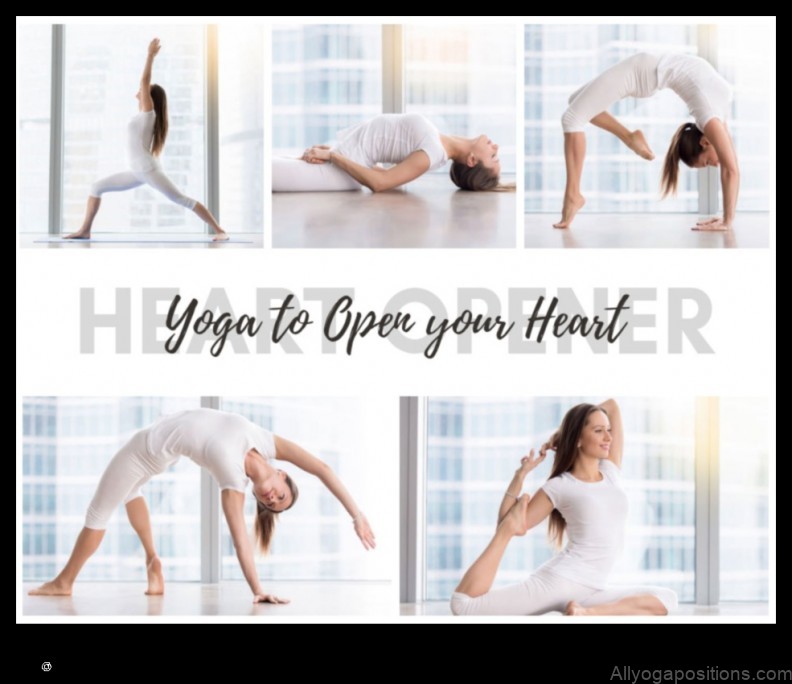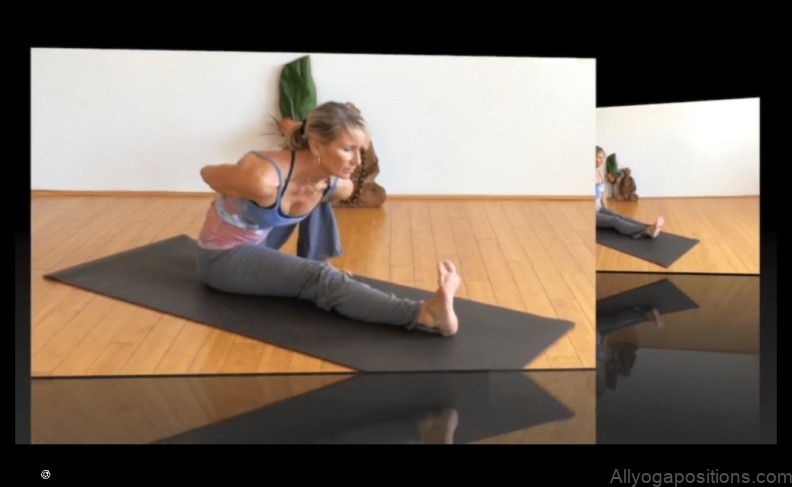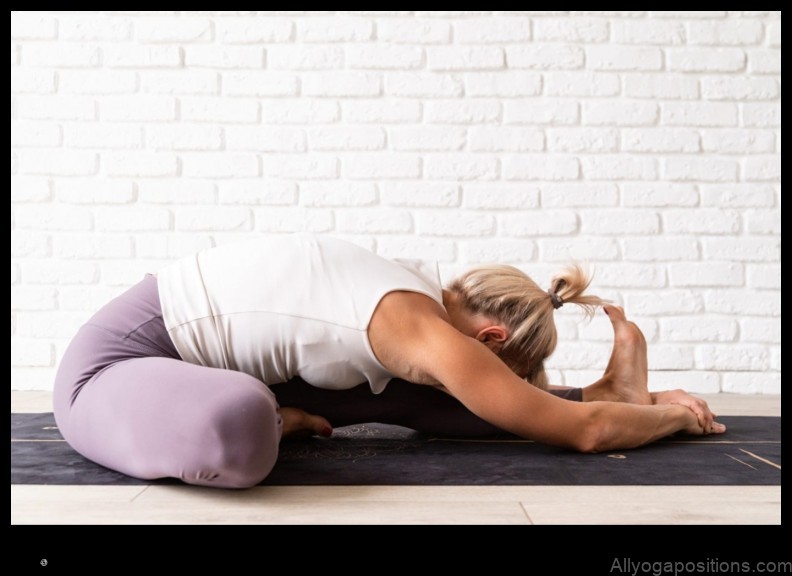
Blissful Backbends: Yoga for Opening Up
Backbends are a type of yoga pose that stretches the spine and opens up the chest. They can help to improve flexibility, relieve stress, and promote a sense of calm and relaxation.
This article will provide an overview of yoga backbends, including the benefits of practicing them, the different types of backbends, how to do them safely, and some common mistakes to avoid. We will also provide a list of backbends for beginners, intermediate practitioners, and advanced practitioners, as well as some tips for pregnant women who are interested in practicing backbends.
If you are new to yoga, it is important to consult with a qualified instructor before starting a backbend practice. Backbends can be challenging poses, and it is important to learn how to do them safely in order to avoid injury.

Benefits of yoga backbends
Yoga backbends offer a number of benefits, including:
- Improved flexibility
- Increased range of motion
- Reduced stress and tension
- Improved posture
- Increased circulation
- Enhanced breathing
- Promoted relaxation
Types of yoga backbends
There are many different types of yoga backbends, each with its own unique benefits. Some of the most common types of backbends include:
- Cobra pose
- Upward-facing dog pose
- Wheel pose
- Bridge pose
- Plow pose
- Shoulder stand
- Headstand

How to do yoga backbends safely
When practicing yoga backbends, it is important to take your time and listen to your body. Do not force yourself into a pose if it feels uncomfortable. Here are some tips for practicing yoga backbends safely:
- Start slowly and gradually increase the intensity of your practice over time.
- Warm up your body before doing backbends.
- Breathe deeply and mindfully throughout your practice.
- Listen to your body and stop if you feel pain.
- Consult with a qualified instructor if you have any concerns about practicing backbends.
Common mistakes to avoid when doing yoga backbends
There are a few common mistakes that people make when doing yoga backbends. These mistakes can increase your risk of injury, so it is important to avoid them.
- Forcing yourself into a pose.
- Breathing shallowly or holding your breath.
- Rounding your back.
- Overextending your neck.
- Holding a pose for too long.
Yoga backbends for beginners
If you are new to yoga, it is best to start with beginner-friendly backbends. These poses are less challenging and will help you to build strength and flexibility gradually.
- Cobra pose
- Upward-facing dog pose
- Cat-cow pose
- Bridge pose
- Plow pose
Yoga backbends for intermediate practitioners
Once you have mastered the basics of yoga backbends, you can start to progress to more challenging poses. These poses will help you to improve your flexibility and range of motion further.
- Wheel pose
- Bridge pose with legs extended
- Plow pose with legs extended
- Shoulder stand
- Headstand
Yoga backbends for advanced practitioners
Advanced yoga
| Topic | Answer |
|---|---|
| Backbend | A backbend is a yoga pose that involves bending the spine backwards. |
| Yoga | Yoga is a mind-body practice that combines physical postures, breathing exercises, and meditation. |
| Flexibility | Flexibility is the ability to move your joints through a full range of motion. |
| Stretch | A stretch is an exercise that lengthens a muscle or group of muscles. |
| Opening | Opening up is a term used to describe the feeling of relaxation and ease that comes from doing yoga backbends. |
II. Benefits of yoga backbends
Yoga backbends offer a number of benefits, including:
- Improved flexibility
- Increased range of motion
- Reduced back pain
- Improved posture
- Increased circulation
- Reduced stress and anxiety
- Enhanced relaxation
III. Types of yoga backbends
There are many different types of yoga backbends, each with its own unique benefits. Some of the most common types of yoga backbends include:
- Cobra pose (bhujangasana)
- Upward-facing dog (urdhva mukha svanasana)
- Wheel pose (urdhva dhanurasana)
- Bridge pose (setu bandhasana)
- Shoulder stand (sarvangasana)
Each of these poses stretches and strengthens different muscles in the back, shoulders, and hips. They can also help to improve flexibility, range of motion, and circulation.
When choosing a yoga backbend to practice, it is important to listen to your body and choose a pose that is appropriate for your level of flexibility and strength. If you are new to yoga, it is best to start with easier poses and gradually work your way up to more challenging ones.
IV. How to do yoga backbends safely
Yoga backbends are a great way to stretch and strengthen your spine, but it’s important to do them safely to avoid injury. Here are some tips for doing yoga backbends safely:
* Start slowly and gradually increase the intensity of your backbends over time.
* Listen to your body and stop if you feel any pain.
* Use props such as a yoga block or bolster to support your spine and make the poses more comfortable.
* Focus on your breath and relax your muscles as you move into each pose.
* Keep your neck in a neutral position and avoid over-arching it.
* Don’t hold each pose for too long.
* Come out of each pose slowly and with control.
V. Common mistakes to avoid when doing yoga backbends
When doing yoga backbends, it is important to avoid making common mistakes that can lead to injury. Some of the most common mistakes include:
- Overstretching
- Bending from the neck
- Holding the pose for too long
- Not warming up properly
- Pushing yourself too hard
To avoid these mistakes, it is important to listen to your body and stop if you feel any pain. It is also important to practice yoga backbends under the guidance of a qualified instructor.
VI. Yoga backbends for beginners
Yoga backbends for beginners are designed to help you gradually open up your spine and stretch your muscles. They are typically gentle and do not require a lot of flexibility. Some of the most common yoga backbends for beginners include:
* Cat/cow pose: This pose is a great way to warm up your spine and stretch your back muscles. Start on your hands and knees, with your hands shoulder-width apart and your knees hip-width apart. Inhale and arch your back, tucking your tailbone and lifting your head and chest. Exhale and round your back, tucking your chin to your chest. Repeat this sequence for 5-10 breaths.
* Bridge pose: This pose is a great way to stretch your back and hamstrings. Lie on your back with your knees bent and your feet flat on the floor. Place your hands on your hips and inhale as you lift your hips off the floor, keeping your knees bent. Exhale and lower your hips back to the floor. Repeat this sequence for 5-10 breaths.
* Wheel pose: This pose is a more advanced backbend that requires a lot of flexibility. Start in bridge pose, then extend your legs straight up and reach your arms overhead. Inhale as you arch your back and lift your head and chest, keeping your legs straight. Exhale and lower your body back to the floor. Repeat this sequence for 5-10 breaths.
VII. Yoga backbends for intermediate practitioners
Intermediate yoga practitioners have a good foundation in yoga poses and are able to hold poses for longer periods of time. They are also able to balance their strength and flexibility.
Some yoga backbends that are appropriate for intermediate practitioners include:
- Bridge pose (Setu Bandhasana)
- Wheel pose (Urdhva Dhanurasana)
- Cobra pose (Bhujangasana)
- Shoulder stand (Sarvangasana)
- Plow pose (Halasana)
When practicing yoga backbends, it is important to listen to your body and not push yourself too far. If you feel any pain, stop the pose and come out of it slowly.
Yoga backbends can be a great way to improve your flexibility, strength, and balance. They can also help to relieve stress and anxiety. If you are an intermediate yoga practitioner, be sure to incorporate some backbends into your practice.
VIII. Yoga backbends for advanced practitioners
Yoga backbends for advanced practitioners are designed to challenge the body and mind. They require a high level of flexibility and strength, and should only be attempted by those who have been practicing yoga for a long time and have a good understanding of their body.
Some of the most common yoga backbends for advanced practitioners include:
- The bridge pose (Setu Bandha Sarvangasana)
- The camel pose (Ustrasana)
- The wheel pose (Urdhva Dhanurasana)
- The scorpion pose (Vrischikasana)
- The headstand (Sirsasana)
These poses should be approached with caution, and it is important to listen to your body and stop if you feel any pain. It is also important to have a qualified yoga teacher to guide you through these poses.
When done correctly, yoga backbends can provide a number of benefits for advanced practitioners, including:
- Increased flexibility
- Improved balance
- Strengthened core muscles
- Reduced stress
- Improved mood
If you are interested in learning more about yoga backbends for advanced practitioners, I encourage you to seek out a qualified yoga teacher who can help you safely and effectively practice these poses.
Pregnancy is a time of great change for a woman’s body. As the uterus grows, it puts pressure on the spine and other muscles, which can lead to back pain, stiffness, and other discomforts. Yoga backbends can help to relieve these symptoms by stretching and opening up the spine, shoulders, and hips.
However, it is important to note that not all yoga backbends are safe for pregnant women. Some backbends, such as the bridge pose and the camel pose, can put too much pressure on the abdomen and should be avoided.
If you are pregnant and are interested in doing yoga backbends, it is important to talk to your doctor first. They can help you determine which backbends are safe for you and how to do them correctly.
Here are some tips for doing yoga backbends safely during pregnancy:
- Start slowly and gradually increase the intensity of your practice as your body allows.
- Listen to your body and stop if you feel any pain or discomfort.
- Be sure to warm up your body before doing any backbends.
- Focus on using your breath to help you move into and out of the poses.
- Keep your spine long and your shoulders relaxed.
With proper care and attention, yoga backbends can be a safe and beneficial way for pregnant women to relieve pain, stiffness, and other discomforts.
FAQ
Question 1: What are the benefits of yoga backbends?
Answer: Yoga backbends can provide a number of benefits, including:
- Increased flexibility
- Improved range of motion
- Reduced back pain
- Improved posture
- Increased energy
- Reduced stress
Question 2: What are the risks of doing yoga backbends?
Answer: There are some risks associated with doing yoga backbends, including:
- Injury to the spine
- Overstretching
- Headaches
- Nausea
- Vertigo
Question 3: How can I do yoga backbends safely?
Answer: To do yoga backbends safely, it is important to:
- Start slowly and gradually increase the intensity of your practice over time.
- Listen to your body and stop if you feel pain.
- Use a wall or other support for balance and stability.
- Warm up your body before doing backbends.
- Cool down your body after doing backbends.
Table of Contents
Maybe You Like Them Too
- Radiant Roots Yoga for Grounded StabilityFind your inner balance and strength with this gentle yoga practice.
- Yoga and Full Moon Rituals A Guide to Harnessing Lunar Energy
- Sukhasana The Simple Yoga Pose for a Peaceful Mind
- The Art of Pratyahara Withdraw from the Senses and Find Peace
- Yoga for Emotional Release Guided Imagery – A Guide to Using the Power of Your Mind to Heal Your Body
